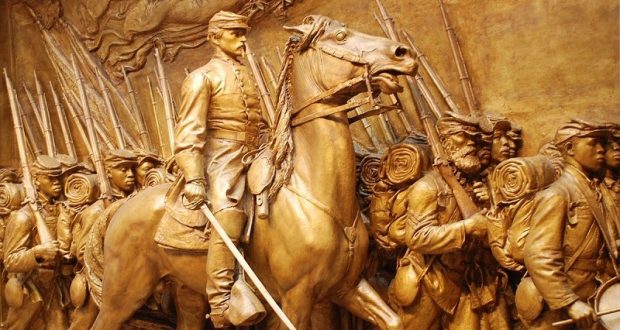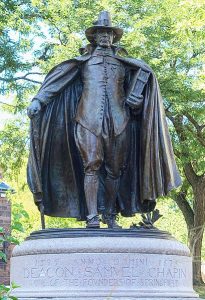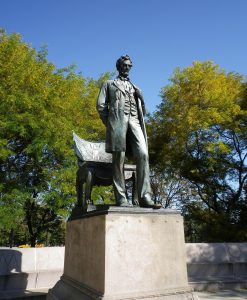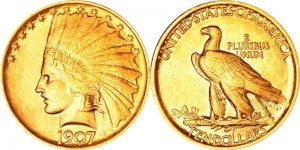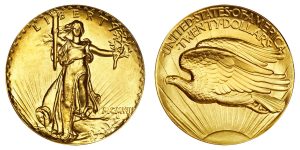By Sal Maccarone
A finished piece of sculpture can take many forms. The sculptural process is loosely defined as: The art of carving, modeling, or otherwise producing works of art which are three dimensional, such as would be a relief, an intaglio, or a sculpture-in-the-round. Breaking this definition down, a relief gives the impression that an image has been raised above its background, such as the face of a coin. An intaglio, (the opposite of a relief), is the result of a process which leaves a design engraved below the surface, as is often seen in monuments, and cameos. To help make sense of these two types of sculpture, if you were to press an intaglio into clay, it would yield an image in relief. The third type, “sculpture-in-the-round”, is what most people will immediately relate to as sculpture. This category includes: Statues, gargoyles, heroes riding bronze horses, or any other piece of art that is shaped on all sides.
Augustus Saint-Gaudens (1848-1907) was an Irish-American artist who made himself familiar with all types of sculpture. While growing up in New York City he became an apprentice to a renowned cameo-cutter. After finishing his apprenticeship in 1867, at age nineteen, he ventured to Paris and then Rome to study design, art and architecture. Ultimately he attended four different schools in Europe. Already establishing a reputation as a sculptor, he began working on his first commissions while still attending school.
In 1876 at age 28, Saint-Gaudens won his first major commission to design, and build a sculpture which was to reside within his home town of New York City. When this monument to Civil War Admiral David Farragut was installed at Madison Square Garden, it became an instantaneous national treasure. From that point on, his reputation cemented, he continued to design and build sculpture commemorating American icons. For example, his bronze statue titled, “Standing Lincoln”, which was completed in 1887, still ingratiates Lincoln Park in Chicago. This piece is considered to be the most important, and accurate representation of our 16th president. Many replicas of this famous sculpture have been reproduced through the years.
Sometime in 1904 Theodore Roosevelt began thinking about the esthetics of this country’s money. Familiar with Saint-Gaudens work, the President asked him to redesign some of the United States coins. So, beginning in 1905 Augustus worked directly with [not for] the US Mint. What was ultimately produced as a result of this collaboration are some of the most beautiful coins in the world. The Saint-Gaudens $10 Eagle, and $20 Double Eagle designs were so outstanding that they were minted in gold! Both of these coins were struck from 1907 – 1933. There was one slight problem that they did have with one of the artist’s designs. It was found that the original double-eagle “high-relief” coin would not stack-up evenly. As a result, the center relief had to be lowered down so that it was below the height of the rim. The few high-relief coins that were struck in 1907 are now worth much more than their weight in gold. One of these coins recently sold at auction for an astounding $3,500,000.
Here is a link to an interesting video that was produced for the Augustus Saint-Gaudens National Historic Site:
Sal Maccarone

